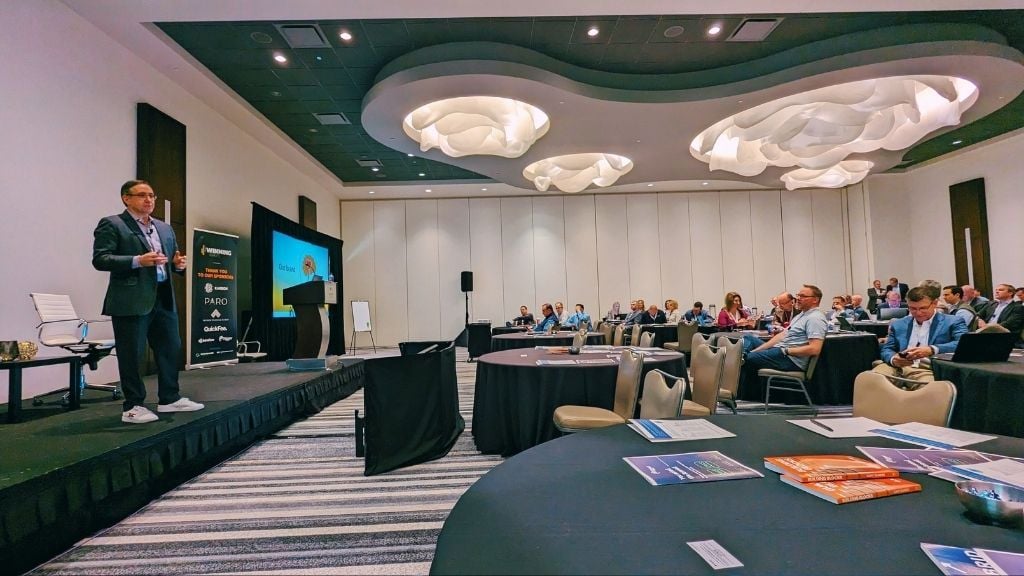3 min read
The Biggest Mistakes New Partners Make and How to Overcome Them
Welcome to the partnership table—where the stakes are higher, the coffee is stronger, and the decisions are bigger. You’ve officially earned your...
3 min read
by:
 Trisha Daho
on
Oct 03, 2025
Trisha Daho
on
Oct 03, 2025

Trisha, a former Big 4 partner, led diverse teams, delivering billions in value for Fortune 500 companies and startups. As a rapid-growth strategist, she created thriving practices and developed leaders who achieved roles like CFOs and CEOs.
Table of Contents

Let’s be honest. Most mentorship programs in professional services firms are well-intentioned, loosely organized and ultimately, underwhelming.
You launch with excitement, pair people up, and hope the magic happens. But it doesn’t. Mentors get busy. Mentees don’t know what to ask. Six months later, the match is forgotten. What’s left? War stories on one side, a desire to be heard on the other. The result: a “nice, but forgettable” relationship.
That’s most mentoring programs—big intentions, weak execution, no follow-through.
It doesn’t have to be that way. With structure—and real training for both mentors and mentees—mentorship can become a growth engine for your firm. It deepens connections, strengthens your pipeline, and builds the culture people want to stay in.
So, how do you move past the coffee chats and crickets? By designing mentorship with intention and accountability. Here’s how to build something that truly works:
You can’t do it all in one program. Pick your focus and design around it. Before you start matching people up, pause and ask: What’s the real goal here? Are you trying to:
Pro tip: If your answer is “retention,” dig deeper. Retention of whom? And why are they leaving in the first place? Look inward—people don’t quit firms where they’re thriving.
This is where most firms miss the mark. We assume people know how to mentor because they’re experienced. Not every high performer makes a good mentor. Forcing a bad match helps no one. Normalize saying, “This isn’t a fit.” Choose wisely.
First, train your mentors. Give them tools and show them how to:
Then, train your mentees. Yes, they need training too. Recognize that not every mentee will ask the right questions simply because they’re ambitious. Spoiler: They won’t. If you want empowered employees, you have to teach them how to show up powerfully in mentoring relationships. Full stop. Teach them to:
Structure doesn’t kill spontaneity—it fuels it. When people know the framework they’re working within, they actually have more freedom to bring their best selves into the relationship. Set some simple requirements:
Mentorship isn’t just about bonding. It’s about growth. Mentors need clarity on their role in guiding. Mentees need to know how to get the most out of the experience. When both sides show up with a shared objectives, the relationship flows more naturally. This isn’t just lunch-and-learn fluff. It’s real-world, career-shaping work. Encourage pairs to dig into:
If you don’t track it, you won’t know if it’s working. Period. You don’t need to micromanage. But you do need visibility. Surveys help: ask participants about impact, then communicate what you heard and what you’ll change as a result. Keep it simple:
If mentorship lives in HR and shows up once a year on a slide, it won’t stick. It needs to move from “initiative” to “identity.” Instead:
Great mentorship doesn’t happen by accident. It happens when firms create a culture where people are taught how to grow—and how to grow others.
If you want a mentorship program that works, focus on three things:
The ultimate test of any mentorship program isn’t how enthusiastically it launches. It’s whether it lasts, evolves, and delivers measurable impact. That only happens when accountability is built in. Someone has to own the program’s success—not just HR, not just the mentors, not just the mentees. Accountability should sit at every level:
When everyone owns a piece of the outcome, mentorship shifts from “nice-to-have” to “non-negotiable.” It becomes a visible expression of your firm’s values and a strategic driver of growth. A mentorship program without accountability is just another initiative. A mentorship program with accountability is a culture shift. And culture—the way people feel, grow, and show up every day—is what keeps talent thriving and firms advancing.
It’s not about perfect pairings. It’s about building relationships that stretch people, challenge assumptions, and move careers forward. Because when people feel seen, supported, and developed—they stay. They lead. And they make your firm better.

3 min read
Welcome to the partnership table—where the stakes are higher, the coffee is stronger, and the decisions are bigger. You’ve officially earned your...

4 min read
Some of the accounting profession’s top thought leaders communed for many impactful discussions around how to best effectuate an optimal work culture...

5 min read
Over the years, I’ve consulted with numerous accounting firms, and a recurring theme is the lack of clear and transparent criteria for becoming a...